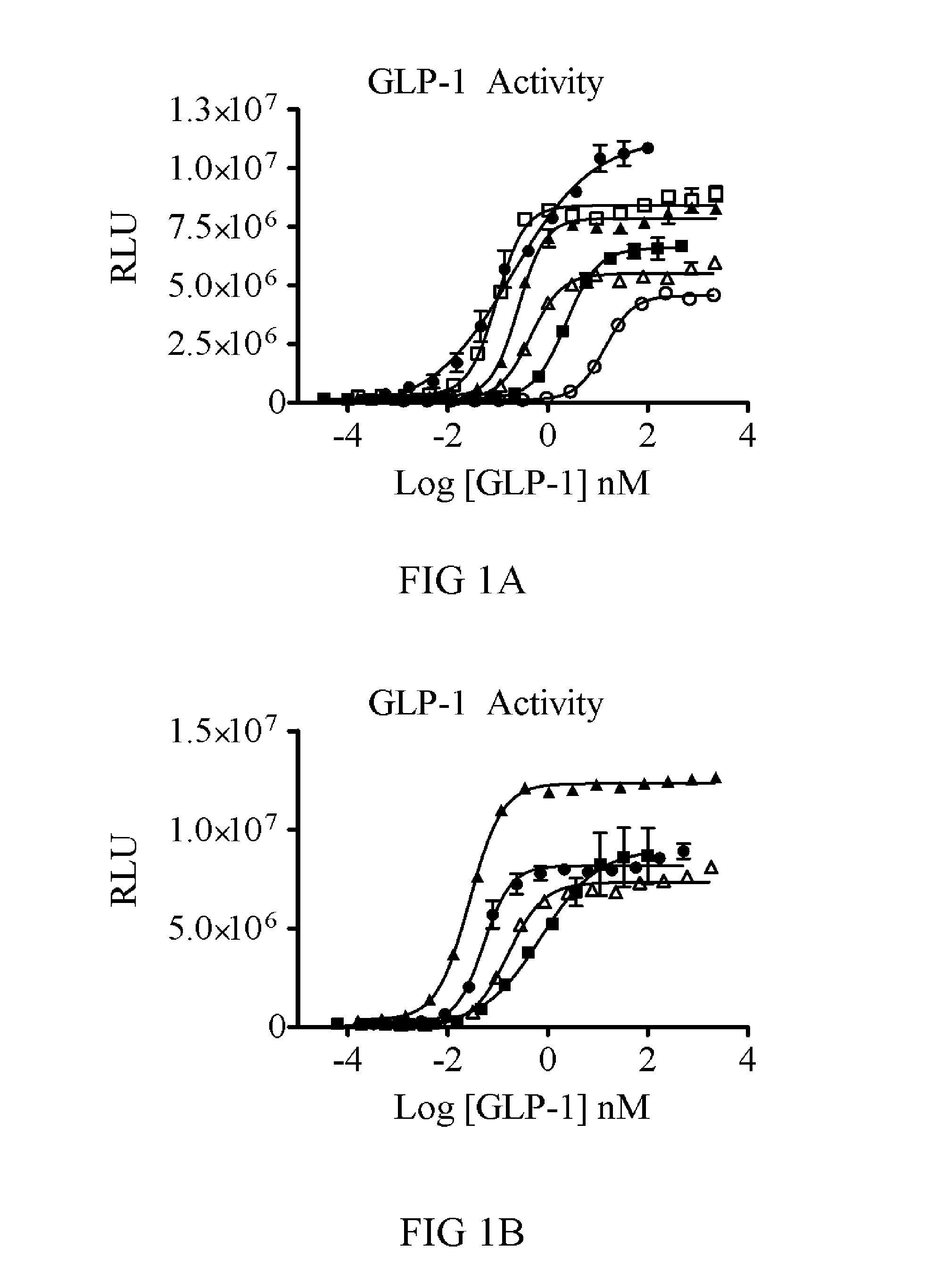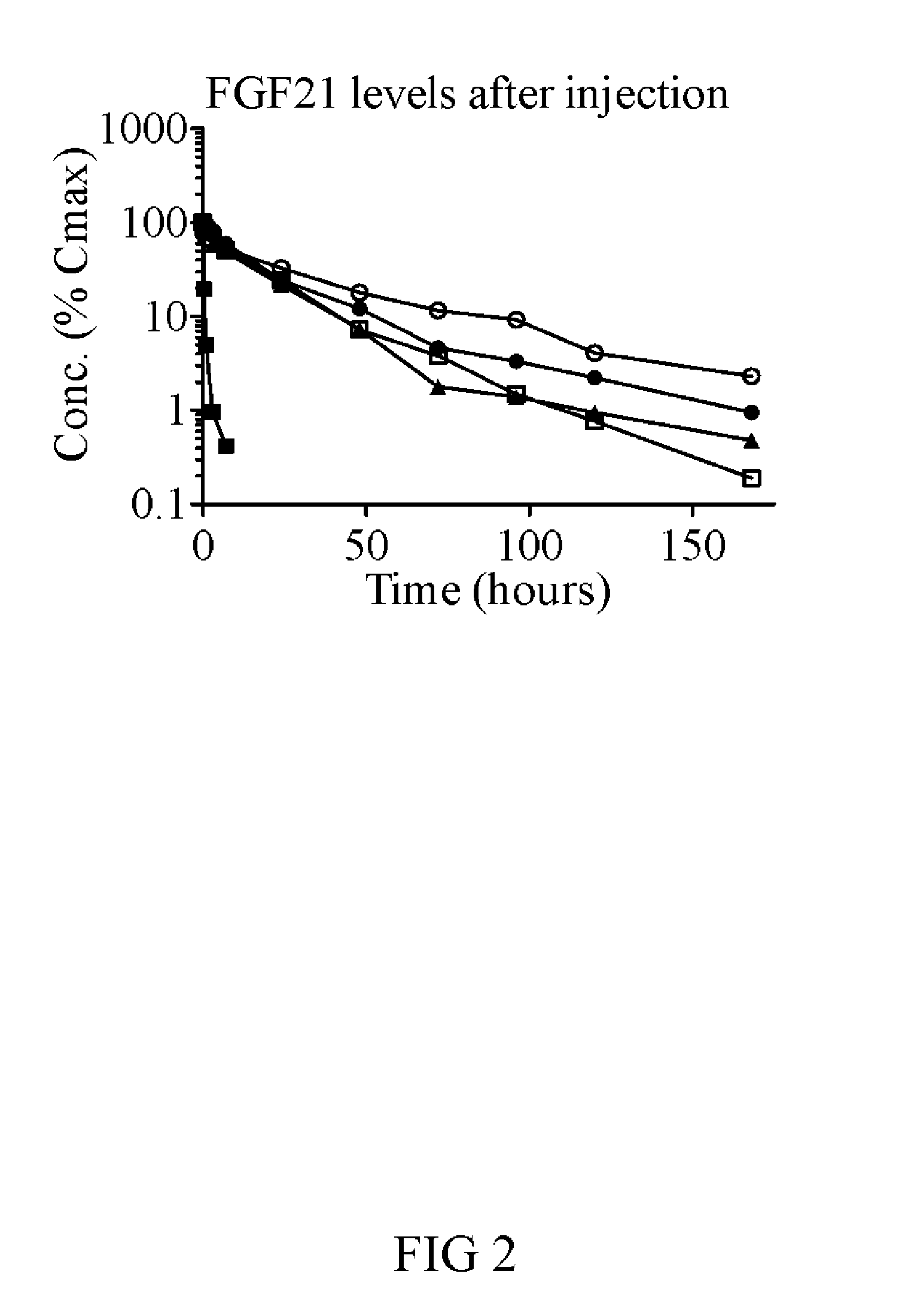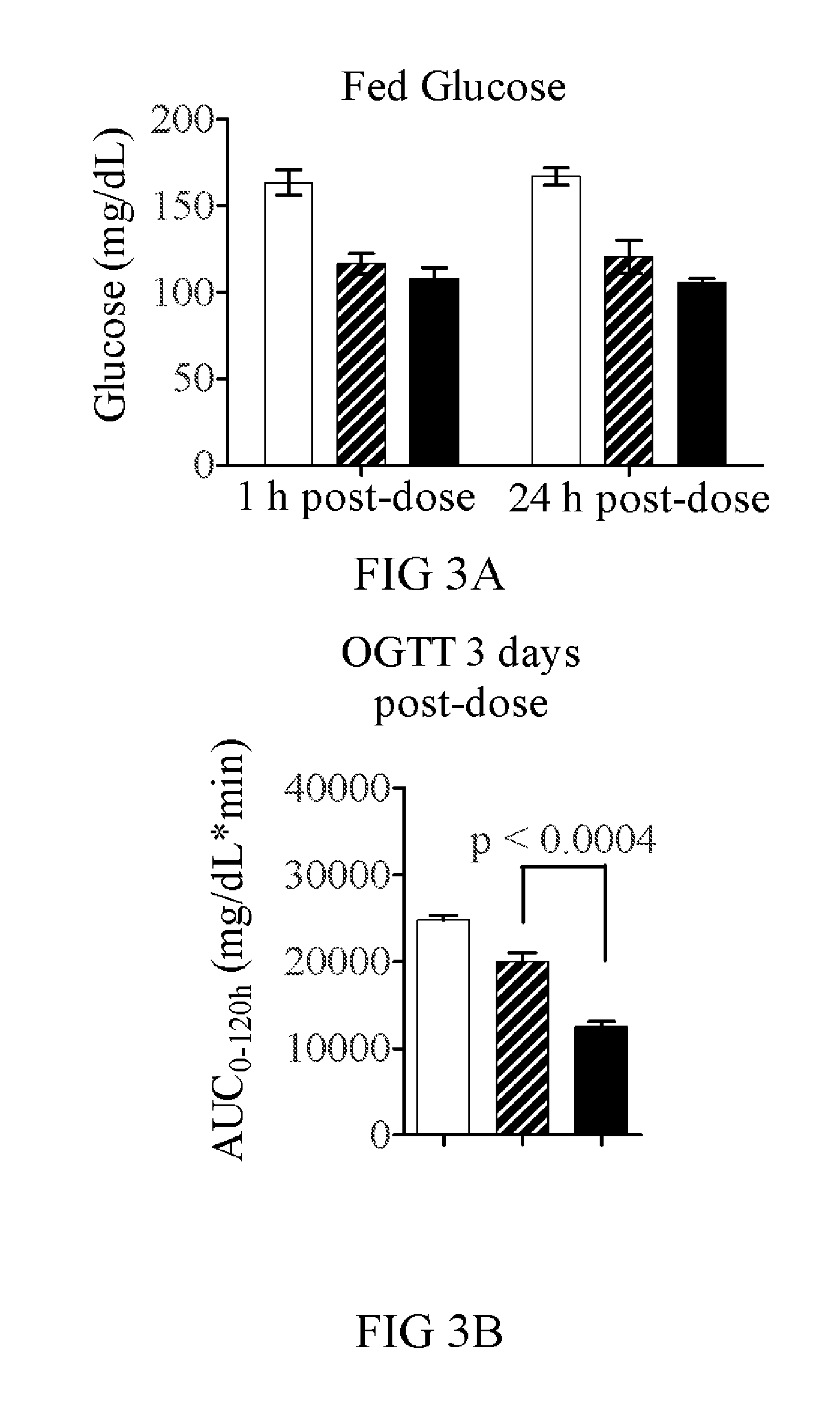Dual function proteins for treating metabolic disorders
a metabolic disorder and function protein technology, applied in the field of dual function proteins for treating metabolic disorders, can solve the problems of short half-life, adverse effects on stability, m-cresol, etc., and achieve the effects of improving glycemic control, body weight and lipid profile, and less susceptibl
- Summary
- Abstract
- Description
- Claims
- Application Information
AI Technical Summary
Benefits of technology
Problems solved by technology
Method used
Image
Examples
example 1
Design of GLP-1 / Proteins of the Invention
[0256]In order to test the efficacy of GLP-1 and FGF21 together, a fusion molecule was designed. Because GLP-1 requires a free N-terminus and FGF21 requires a free C-terminus for receptor binding and activation, the two were cloned in the order of N-GLP-1-linker-FGF21-C. Initial constructs were made with GLP-1 residues 7-35 and with or without several modifications to the N-terminus for DPP-4 protection (discussed below). Further modifications of GLP-1 (point mutants or deletions) were tested and scored by in vitro potency.
[0257]Linkers of 3, 8, 10, or 20 amino acids were cloned. For FGF21, residues 33-209 of the wild-type human protein were used. Constructs with and without PEGylation sites were produced. PEGylation was accomplished using maleimide-PEG reagents (40 kDa linear and branched PEGs) reactive toward an introduced Cys. The Cys was placed at position R154 of FGF21 and at several sites in the GLP-1 or Exendin-4 and linker. Constructs...
example 2
Test of Fusions in the ob / ob and db / db Diabetic Mouse Models
[0262]FGF21 has been shown to improve blood glucose levels, liver lipid levels, and body weight in the ob / ob mouse model of type-2 diabetes (T2D; see, e.g., A. Kharitonenkov et al. (2005) Journal of Clinical Investigation 115, 1627; T. Coskun et al. (2008) Endocrinology 149, 6018; and E. D. Berglund et al. (2009) Endocrinology 150, 4084). Likewise, GLP-1 analogues have been shown to improve glucose control, beta cell function and liver health in this genetic mouse diabetes model (Gallwitz B., Glucagon-like peptide-1 as a treatment option for type 2 diabetes and its role in restoring beta-cell mass. Diabetes Technol Ther. 2005, 7:651-7).
[0263]To determine if the fusion of GLP-1 to FGF21 would lead to additional efficacy, the WT GLP-1 and GLP-1 (A8S) versions were tested against an equivalent FGF21 molecule each with the same 40 kDa branched PEG attached. In a two week study with twice weekly dosing, the FGF21(R154C)-PEG (V23...
example 3
Design of GLP-1 / Proteins of the Invention from FGF21 Variants
[0274]A fusion was made with the following FGF21 variant sequence, which we refer to herein as “Variant 76” or “V76”:
(SEQ ID NO: 130)1DSSPLLQFGG QVRQRYLYTD DAQETEAHLE IREDGTVGGAAHQSPESLLE LKALKPGVIQ61ILGVKTSRFL CQKPDGALYG SLHFDPEACS FRELLLEDGYNVYQSEAHGL PLHLPGNRSP121HCDPAPQGPA RFLPLPGLPP ALPEPPGILA PQPPDVGSSDPLAMVGPSQG RSPSYAS
[0275]FGF21(V76)-PEG features a 40 kDa branched PEG linked through Cys154, and eight point mutations relative to the 177 amino acid wild-type protein (Q56E, D74H, Q82E, R105K, K150R, R154C, R159Q, S195A, all made relative to full-length FGF21 protein sequence (NCBI reference sequence number NP—061986.1)). The risk of clinical immunogenicity toward this molecule is considered low based on an EpiScreen time course assay of human T-cell responses. The molecule has a serum half-life time of more than 30 h in mouse and rat and significantly lowers glucose AUC in ob / ob mice with twice-weekly injections of 1...
PUM
 Login to View More
Login to View More Abstract
Description
Claims
Application Information
 Login to View More
Login to View More - R&D
- Intellectual Property
- Life Sciences
- Materials
- Tech Scout
- Unparalleled Data Quality
- Higher Quality Content
- 60% Fewer Hallucinations
Browse by: Latest US Patents, China's latest patents, Technical Efficacy Thesaurus, Application Domain, Technology Topic, Popular Technical Reports.
© 2025 PatSnap. All rights reserved.Legal|Privacy policy|Modern Slavery Act Transparency Statement|Sitemap|About US| Contact US: help@patsnap.com



